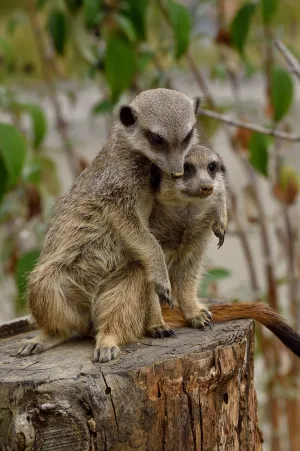
Mammal
The Guinea baboon
Papio papio
The Guinea baboon, Papio papio, is a primate from the Cercopithedicae family and lives in the African savanna. It spends most of its time on the ground. It can travel up to 8 km on four legs and only climbs up tall trees to sleep.
Distinctive features
The Guinea baboon is the smallest of the five known baboon species. Like its cousins, the swelling of its ano-genital area, which varies in colour from red to purple depending on the species, indicates monthly ovulation in females.
Anecdote
The grooming of young and adult animals has an essential function within a group, not only for reasons of hygiene (as they rid themselves of parasites) but also to ease tension and strengthen the cohesion of the clan. Researchers have shown that these grooming sessions stimulate the production of endorphins, which provide a feeling of well-being.

Babouins de Guinée
© MNHN - F.-G. Grandin
Uyuni, la femelle babouin de Guinée (Papio papio)
© MNHN - F.-G. GrandinSponsor a species
By sponsoring a species from the Parc zoologique de Paris, you will support major conservation projects. Thanks to your donation, we will be able to improve the welfare of the animals, learn more about threatened species, and set up conservation initiatives in their natural environment. You will also have access to exclusive rewards!
I want to sponsor a species from the Parc zoologique de Paris




